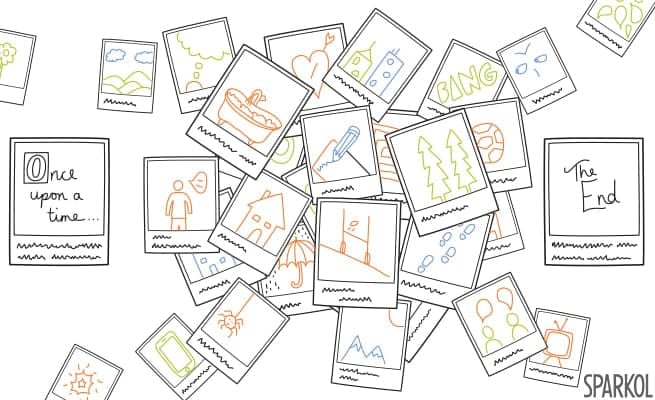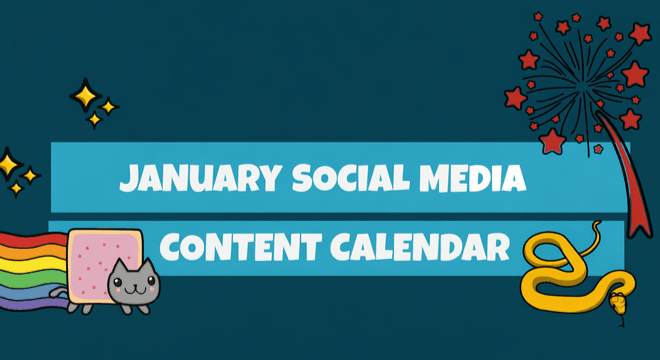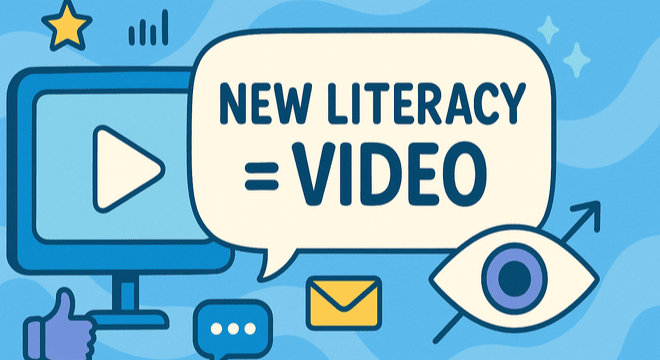
What makes some scribe videos connect with their audience while others are nice but forgotten almost straight away? What is it that makes people feel involved, that gets them on your side – ready to act on what they've seen?
This is the first article in a series that teaches you how to make powerful and unforgettable scribe videos. See the end of the post for more.
Gone are the days when you could sell a product or an idea simply by shouting about how effective it is. Nowadays, the videos that get shared are those that inspire the audience.
Those that move an audience.
Those that have heart.
When you think about ad campaigns from Apple or Nike, you realise that it isn't the products taking centre stage. It's their ethos, what they stand for. What people buy into is a story – a mythology that they want to belong to.
You might not be selling a product. You might not be a world-famous company. But you still need to tell a bigger story – one that captivates and moves your audience.
It might be the story of how your business blocked a gap in the market. It might be the story of someone's life who was changed by your training. It might be a story that resonates with students and brings a subject alive.
You don't necessarily have to devise elaborate characters and backstories to give your scribe its heart. You just need to understand how stories work.
These four simple but profound principles will show you.
1. Keep it simple
The majority of stories follow a really basic structure, with only a handful of character types to choose from. These include:
- The hero – the protagonist must be friendly and relatable
- The villain — struggles against the hero
- The dispatcher — character who sends the hero off
- The (magical) helper — helps the hero in their quest
- The princess or prize — the hero deserves her throughout the story but is unable to marry her because of an unfair evil. The hero's journey is often ended when he marries the princess, thereby beating the villain
- The donor — prepares the hero or gives the hero some magical object
- The false hero — takes credit for the hero’s actions or tries to marry the princess
Think – if you're selling mould cleaner, you could place your viewer at the centre of the story as the hero with a grimy bathroom. Your product could be the magical object or helper (if it's been made into a character). The villain could be the mould – you get the picture.
Alternatively, you could make your potential customer the princess who needs saving, and your product or idea the hero. There's many different ways of looking at this, but thinking about roles will help you figure out how all these pieces are supposed to fit together.
It's the same if your video promotes an idea or a methodology. You might not be selling a physical product, but you can still make your idea that thing that helps the hero complete his quest and live happily ever after.
2. Create and satisfy desire
To successfully market your product or idea, you will need to show that your product fulfils a need or desire in the viewer.
Most story structures start with equilibrium and fall into disequilibrium before returning to a new equilibrium. Basically, everything is fine until something bad happens and the hero has to fight to make things okay again.
Your customer was getting on quite happily until mould started destroying their bathroom. You have to demonstrate how your mould-busting product is going to put things right. Think about interesting ways to show the potential customer that your product will restore the equilibrium to their life. Even better, show them how it will improve their lives forever.
If you are scribing for a learning environment, consider tantalising your audience with half-told stories. Tell only half of an intriguing tale and work your way gradually through the information that needs to be learnt, with the promise of learning the outcome at the end.
Alternatively, try incorporating the information into the story itself in a memorable way. What if your hero were to progress in the story each time he or she completed a times table? Make achieving a new goal an exciting, rewarding process and your audience will never look at that boring subject matter the same again.
3. Make it memorable
The stories we tell might all be the same at base level but you need to define what makes you special. Endless lists of facts might seem the logical way of highlighting success or transferring information, but stories are actually the perfect format for creating a lasting impression.
Lois Geller, a marketer and writer for Forbes, believes these four factors are key to a memorable advert:
- Disruptive and relevant visuals
- Strong brand identification
- A brilliant headline
- 'Something else'
The something else is a variable, but often it's something which inspires curiosity. You want your viewer to go 'What’s going on here? This looks interesting'. Hopefully you already have a good idea of what it is that makes your product or idea unique.
These rules work for explainers and training videos as well – make it clear who you are, what you're there to say and invest some time in making your scribe visually exciting and you'll have no problem keeping your audience engaged.
4. Speak confidently
If you want people to get on board with your story, you need to speak confidently. If you're sharing advice, make it personal.
To make your scribe memorable, be selective about what information you include. Cut out all the pointless jargon. Speak simply and directly to your viewer.
Make sure that the language you choose is positive and inspiring, not accidentally negative. It's far too easy to get bogged down in overly complicated phrasing. For example, 'Call us today' has far more impact than 'Don't hesitate to call us' – it's direct, positive and a clear call to action. Similarly 'this video will make learning x easy!' is far more inspiring than 'this video will make learning x less difficult'.
It's important to be confident in your delivery but also remember that this is not about you. You are only there to explain to your viewer how you can help them. If you were just planning on shouting about how amazing your product or idea is like the old school advertisers – don't bother.
Stories can be personal but also have the power to connect us together. What stories have inspired you to take action? And what stories will you scribe in 2014? Share your thoughts with the VideoScribe community on Facebook or Twitter.
More expert advice from the Better Scribes series:
- How to give your scribe a heart
- Captivate your audience with these pro colour tips
- How to record a professional sounding voiceover
- The layout lowdown from a design expert
- Why forgetting fonts is a big mistake
- 4 Easy ways to find original images for VideoScribe
- Are you guilty of these amateur timing mistakes?
- The secrets to ridiculously persuasive scribing
- How to hit the right note with scribe music
- 7 Clever tricks seasoned scribers swear by


.png)



![How to create animation magic [3-part guide to video success]](https://blog.videoscribe.co/hubfs/How%20to%20create%20animation%20magic%20guide%20VideoScribe.png)





COMMENTS